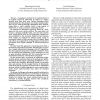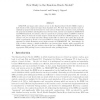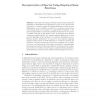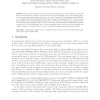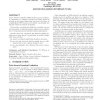1005 search results - page 46 / 201 » Practical Secure Function Evaluation |
SP
2010
IEEE
13 years 6 months ago
2010
IEEE
A program is defined to be noninterferent if its outputs cannot be influenced by inputs at a higher security level than their own. Various researchers have demonstrated how this pr...
CRYPTO
2009
Springer
14 years 3 months ago
2009
Springer
RSA-FDH and many other schemes secure in the Random-Oracle Model (ROM) require a hash function with output size larger than standard sizes. We show that the random-oracle instanti...
ISVC
2010
Springer
13 years 7 months ago
2010
Springer
Physically-based image synthesis requires measured spectral quantities for illuminants and reflectances as part of the virtual scene description to compute trustworthy lighting si...
FSE
2009
Springer
14 years 9 months ago
2009
Springer
Abstract. We provide the first proof of security for Tandem-DM, one of the oldest and most wellknown constructions for turning a blockcipher with n-bit blocklength and 2n-bit keyle...
PODC
2004
ACM
14 years 2 months ago
2004
ACM
Secure function evaluation (SFE) enables a group of players, by themselves, to evaluate a function on private inputs as securely as if a trusted third party had done it for them. ...
